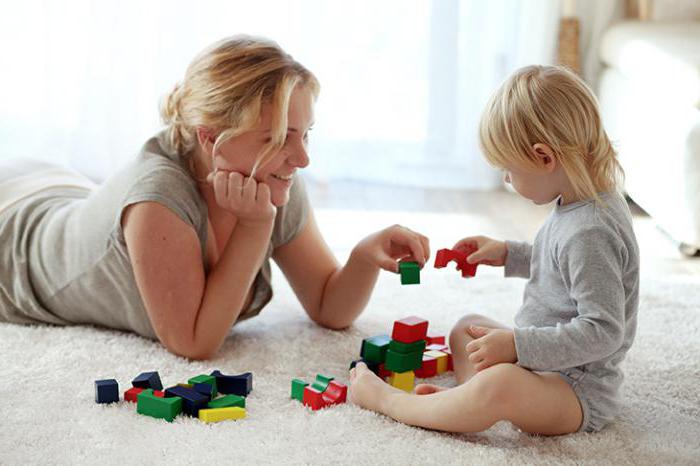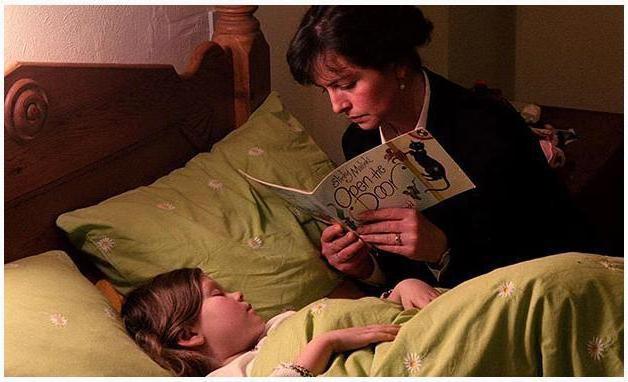Parents are always very worried and worried when their child has difficulty falling asleep. What is this - a disease, a whim or just character? After all, it happens that two completely different children grow up in the same family. One may lie down and fall asleep immediately, while another may not sleep a wink all night. It is important to find the reason for this behavior and only then take action. How to put a 2 year old child to sleep? There can be no universal advice. An individual approach will allow both to eliminate minor deviations and not to miss the onset of a serious illness.
Common reasons
Before you consider how to quickly put your child to sleep, you should understand what is bothering your baby. The main causes of restlessness in children at night include:
- Colic. Characteristic signs are diagnosed in the vast majority of babies under the age of two months. The baby draws up his legs and expresses with all his behavior an extreme degree of anxiety. Individually prescribed medications by the therapist relieve discomfort and the child becomes calmer. This condition is observed immediately after birth and is in most cases periodic in nature. Then this problem goes away. If abdominal pain bothers you even at 2 years old, then this is a reason to consult a doctor with a request for a serious examination.
- Malnutrition. The amount of food consumed is strictly individual, and it is not always correct to rely on the average recommended norms. When breastfeeding, the dosage of milk is almost impossible to accurately determine at home. It is possible that the child needs additional feeding if there is a lack of natural nutrition. If there is enough nutrition, then the cause of concern must be sought among other factors.
- Teeth. Parents with experience know very well that sleepless nights become a common occurrence before teeth appear. Swollen gums are the first sign of the approaching long-awaited, but such a difficult test for parents as teething. This cannot be avoided, you can only stop the painful processes in the child with medications. Calm children during the teething period are rare, and this is a truly great gift for parents.
- Compliance with the regime. This factor is often underestimated. If adults are able to withstand irregular nutrition, emotional stress, unstable sleep patterns and other factors, then the child is not ready for this. The daily biological cycle with clearly timed procedures causes the body to become accustomed to performing one or another action at a certain time. If you are wondering how to put a child to sleep at 2 years old, then reconsider the daily routine. The correct routine contributes to both proper physical development and a stable mental state of the baby. Urgent matters, visits from guests, interesting programs and other important adult matters should be postponed for the sake of the child’s health.
- Helminths. According to WHO, almost every person on earth carries parasites in their body and does not even realize it. Moreover, a good half of the planet’s inhabitants had to become infected with one of the three most unpleasant types of worms. Even if parents think that their child has no chance of catching this infection, it is necessary to check the child for the presence of infection in case of restless behavior. Modern treatment methods will allow you to quickly and safely get rid of this problem.
- Environment. Here you need to rely on time-tested tips for maintaining a children's room: wet cleaning, ventilation and maintaining normal air humidity. A healthy environment in the room where the baby lives after birth is extremely important for his future development. Habits and behavioral stereotypes are developed and reinforced. For example, dry air, which, by the way, contains a high content of microparticles that are undesirable for inhalation, can cause regular sleep disturbances.

Infants
In the first months of a baby’s life, all difficulties in falling asleep usually come down to satisfying physical needs. And if the baby is fed, has a dry diaper on and nothing hurts, then he falls asleep on his own without tears or screams within a certain period of time. Therefore, it is necessary to exclude possible painful signals in the baby’s body and periodically carry out procedures to maintain personal hygiene, as well as take care of proper feeding.
- Usually in the first four months of life, infants are especially concerned about colic. Discomfort and abdominal pain prevent them from sleeping. Special suspensions (for example Espumisan) or tummy massage (stroking clockwise in a circular motion) can help reduce discomfort in the baby. Additional warming of the tummy with a warm diaper also helps a lot.
- The second most common cause of anxiety in infants is teething. Moreover, for all babies this happens at different periods, for some as early as 4 months, and for others only from 6-7. Special gels and cooling teething agents help to numb the gums.

- The main calming ritual before falling asleep for infants is feeding. It is very important for a mother who is feeding her baby with breast milk to monitor her diet, and for bottle-fed babies, you need to choose the right formula. To prevent the baby from being tormented by bloating and discomfort in the abdomen, after feeding, you need to hold him, leaning his tummy vertically against you, for several minutes.
- Wrap your baby in a soft diaper or blanket. This will create comfort and a feeling of safety for him. Just don't use tight swaddling. The baby must move freely to feel comfortable while sleeping.
- Don't forget the diaper. Some mothers use simple diapers instead of diapers. But the baby will be able to truly get enough sleep and the mother will be able to rest only if the baby is wearing a high-quality disposable diaper.
- Rocking is the fastest way to calm a baby before bed. But as the baby grows up, it is better to try to use other alternative methods. So that you don’t have to, it will take a long time to wean your baby from falling asleep in your arms.
- If your child cries while sleeping, do not immediately approach the crib. Perhaps he woke up due to some extraneous noise and will soon fall asleep.
From 2 to 5 years

That is why it can be quite problematic to put them to sleep during the daytime. Because any beliefs and arguments are not particularly effective. But still, children are still quite small and they definitely need daytime sleep to restore strength, as well as their proper psychological and mental development. If the child categorically refuses to go to bed during the day, invite him to simply lie down for half an hour in a calm environment. For a girl, offer an interesting game in which you need to help put a doll or teddy bear down. A boy may be allowed to take his favorite small car with him.
Basically, refusal to sleep is caused by the fact that the child is not yet tired enough and has not spent enough time walking. Therefore, do not forget about exercises and active games in the fresh air. Then the child himself will gladly agree to soak in the crib for a couple of hours during the day.
Rule No. 1. Priorities
It is very important to organize life in such a way that parents have the opportunity to fully rest for their own normal well-being. If before the birth of the child the sleep time was 8 hours, then after the baby arrives in the house it should remain the same. There is no reason to deny yourself food, rest and sleep. Everything should be enough.
Only parents who feel comfortable (physically and psychologically) can fully ensure their child’s full and high-quality development.
Rule No. 2. Creating a schedule and sleep pattern
In fact, correctly calculating the rest time is not so difficult. The baby sleeps much more than its parents. Here it is important to properly accustom your child to the family schedule and, of course, not to disturb it yourself. The emphasis is on the child's subordination to the family regime, and not vice versa. Of course, you will have to adjust your own life, but it must be a compromise. If you initially establish the correct daily routine, then you will not have the question of how to quickly put your child to sleep.
You will have to observe the chosen time quite carefully, and both the parents themselves and the baby need to prepare for bedtime. The exact time is chosen based on their objective and reasonable life prerequisites. Let it be from 21:00 to 05:00 or from 23:00 to 07:00, it doesn’t matter, the main thing is that mom and dad follow this regime and teach the child to it.
Daytime naps: how to put your baby to bed
Every parent is sure that daytime sleep is important for a child . Moreover, it is desirable that must have at least until the age of three. The theory is confirmed by doctors - an intensively growing organism, like your little eternal jumper, simply cannot function continuously for 12 hours. This is too difficult a task for him. But what to do if the little one is capricious and refuses to go to bed during the day? He is not familiar with the medical reports and simply believes that sleep is not worth wasting time on. After all, there are so many interesting things around! Let's not succumb to childish provocations and try to solve this problem together.
Attention - on temperament
As we already know, children are born with different temperaments . Take a closer look at your child from the first day of life, how does he behave before falling asleep - does he yawn, toss and turn, lie quietly or indignantly demand attention?
With calm phlegmatic people and thoughtful melancholic people, there are often fewer problems; while still very little, they lie thoughtfully in the crib, yawn, calm down on their own and calmly fall asleep. As they get older, these little ones agree to sleep during the day without much persuasion, simply because they love it, prefer not to argue with their mother, or are accustomed to the routine.
It's another matter to put down an active choleric person or an energetic sanguine person. This task is not an easy one, because they always have something to do, and sleep is absolutely not on their list of interesting things to do. Of course, they don’t want to sleep, because there’s still so much left unjumped, under-run, under-drawn and under-built!

Our forum member mother HelenaRam says : “I stopped putting my child to bed at 2.5 for a nap. I simply physically could not roll him to sleep for 2 hours, besides, after a daytime nap he was in a terrible mood until bedtime. The neurologist said not to force the child and not to put him to sleep if he doesn’t want to. I don’t consider this a tragedy; I myself did not sleep in the garden during the day. When my daughter doesn’t sleep during the day, she falls asleep in 5 minutes at 21, and when she sleeps for at least an hour, she barely falls asleep by 23, she can toss and turn for an hour, trying to fall asleep.”
It is for such kids that it is important to establish certain rituals and follow the sequence of actions known to them in advance. We tried your rituals, you say, but nothing worked. Let's find out how many times we tried? The habit is formed in about a month, and this rule works taking into account the fairly stable psyche of adults and self-control. If you were hoping that by sticking to your daily routine and rituals for a couple of days everything would change, we have to disappoint you - this is a rather long process.
So, rituals . Children's sleep should have its own, specific time. For example, you walk outside, then have lunch, change your baby into pajamas, he drinks some water, goes to bed, and you read him a fairy tale. Repeating the same regular ritual day after day gives the baby confidence, gives a feeling of calm, and also guarantees an understanding of what will happen next.
Rituals work best when parents select an individual key for their child. Some babies fall asleep well cuddled with their favorite toy, some need to read this particular book, while others prefer to listen to a lullaby performed by their mother or an audio CD. For some children, it is important to hold their mother’s hand, suck a pacifier, or fall asleep with the curtains drawn, but the process of falling asleep is not always fast enough. The option - he touched his head to the pillow and fell asleep is possible, but only if the baby is already really tired, has had enough exercise and simply collapses.

Psychologist Natalya Karabuta says : “Parents should decide for themselves how they feel about daytime sleep. Yes, it is necessary and important for the child, but if instead of relaxing songs and relaxing strokes of the baby, the mother is determined that she will have to fight with the child for sleep, nothing will work.
Children perfectly sense the mood of adults, and when daytime sleep becomes a problem for both mother and baby, and not a pleasant rest, there is no point in it. Also, do not frighten or punish with sleep. The phrase “If you behave badly, you’ll go to bed now” is often heard in our homes. What does this expression tell the child? That sleep is a punishment in the understanding of adults. In this case, it will be problematic to put the baby to sleep of his own free will, except perhaps to force him, but this is not an option either.”
How much sleep?
to the question of how much sleep a child should sleep , but there is no definite answer, because every baby is an individual. For some children, daytime sleep is divided into two parts: after breakfast and after lunch. If the formula has been eaten and slept for 30-40 minutes, it is convenient for the baby, there is no need to change anything. A little time will pass, and at about the age of 1.5 years the baby will already sleep once a day, having adjusted its daily routine. If a child goes to the kingdom of Morpheus only once a day, then he can sleep from 40 minutes to 2.5 hours.
To make the process of going to bed as optimal as possible, you should pay attention to the daily routine of not only the baby, but the whole family.
Why does a child need a regime? He gets used to waking up, eating, going for a walk, playing, walking and sleeping at the same time. Remember how you feel hungry every time, for example, at 12 noon, and you always drink tea or coffee with cookies at this time. Sometimes this is no longer a necessity, but simply a force of habit, but if this is not done, the body seems to be missing something. It is important for adults to form such habits in a child, then it will be easier to feed or put the baby to bed, because his body itself will require bread, circuses or rest at a certain time.

the sequence of changing actions itself will prompt the baby to what awaits him next . If suddenly your child is late at lunch or playing with friends, there will be nothing wrong if he goes to bed a little later than usual. However, it is better to avoid activities before bed that the baby may become actively involved in, so as not to aggravate the situation. Also, do not turn on the TV or computer before bedtime. It is better to postpone watching even children's TV shows until after bedtime or do it no later than 1.5 hours before the expected quiet hour.
Our mother-forum member Tanita says : “Mila has been fooling me with naps for a long time. She went to bed once, then twice, or didn’t fall asleep at all, and then she suddenly passed out at 8 pm and we “danced” around her with the whole family until 12 am. The problem started with the fact that when she was smaller, I rocked her to sleep in a stroller. She has grown up, no longer fits in the stroller, and since the crib does not rock, she begins to have difficulties with daytime sleep. I noticed that Mila fell asleep best right after lunch. The main thing was that she didn’t get her hands on some kind of toy along the way. Even if she really wanted to sleep, she would defiantly grab anything and start playing, actively protesting against being put to bed. Therefore, I was cunning, and while Mila was having lunch in the kitchen, I went into the room for a minute and removed everything that could distract her. After lunch, I carried her out of the kitchen in my arms, this was our ritual, then to the potty, undressed and to the crib. Most often, this system worked and the child fell asleep within 40-50 minutes, and quite quickly.”
Read also: 10 rules for healthy baby sleep
Work on mistakes
Do not forget that in order to make it easier for a child to fall asleep during the day, he must have the right atmosphere : a low pillow, a comfortable mattress, a light blanket, not cold and not hot. Bed linen and pajamas made from natural fabrics, as well as fresh air and the air temperature in the room where the child will sleep no higher than 23 degrees are excellent parental helpers.
For some children silence ; their daytime sleep is very light. All you have to do is suddenly ring the phone, or mom misplaces the dishes on the stove - the baby wakes up. Sound familiar? Don’t worry, perhaps at that moment the baby was in the REM sleep phase, that is, he was not sleeping very deeply. If the baby wakes up without tears and is not capricious after opening his eyes, there is no need to worry. It is difficult to create complete silence on purpose for a child’s daytime sleep, and it is not necessary. After all, mom still has chores to do around the house—cook something or clean up. If the baby falls asleep and sleeps deeply and calmly, usually he is not disturbed by extraneous sounds. Is the baby still awake? Take him in your arms with a smile and kiss him.
You shouldn’t set any complex frameworks, be flexible , because mothers sometimes screw themselves up. If your child has trouble falling asleep in his crib, encourage him to rest on the sofa or parent's bed. It would be a good idea to lie down next to the baby, because the mother also needs rest. But household chores will always be there, there’s no escape from them.

Also, don't worry if your baby misses his nap entirely. If this does not become a habit and tradition for him, then one day without rest during the day will definitely not harm the baby, except that he will have to be put to bed early in the evening. Although, there are always exceptions to the rules, and you need to focus not only on general trends, but also on the personal characteristics of the child.
Our forum member mother coccinelle says : “My son slept during the day, and then in the evening he fell asleep at midnight or one in the morning. I was used to going to bed early, and for me it was torture. Moreover, even if I started going to bed at 9-10 pm, I still fell asleep after midnight. Then I decided not to torture the child and not to suffer myself. Moreover, a lot of energy was spent on daytime naps: the child completely refused to lie down just like that. From 3.5 years old, the child does not sleep during the day. But in the evening it goes to bed at 8-9. This is such a relief for me! “And I can go to bed early and the child sleeps for 11-12 hours.”
Does your baby refuse to sleep all the time? Perhaps daytime sleep is no longer relevant for him, but at this time he does not have to do anything. If your child doesn't mind, he can lie in his crib for a while, or you can join him and read a book. Of course, in this case, you will completely belong to the child at this time, but time flies very quickly, and soon he will no longer need his mother’s attention so much.
So, let’s collect the main thing: a positive attitude of the child and mother to daytime sleep, adherence to the daily routine and rituals, and we are sure that everything will work out for you!
Read also: 7 important nuances of children's sleep
Rule No. 3. Where and with whom to sleep?
There are only three possible options, and each of them has the right to exist:
- Sleeping in the same room. A crib is placed in the common bedroom, in which the newborn spends the night. A good and convenient option for everyone. But only in the first year of life. Further living in the same room is not recommended, although it is possible for up to three years.
- The child sleeps in his room. Some experts recommend accustoming children to their own bed in the nursery from birth. However, not all parents agree with this opinion. Therefore, a painless solution for everyone will be to organize children’s sleep separately from the age of one year.
- Sleeping with parents. Not the best option, although some parents try to find explanations for the reasons for their own behavior. Pediatricians claim that this has nothing to do with a healthy lifestyle.
How to put your baby to sleep
Why do so many problems arise with a child's sleep? I went to bed late, got up early, woke up six times during the night, didn’t sleep during the day, can’t fall asleep without my mother, takes two hours to get to bed... Why is there so much tension around such a natural need? Where and when do we lose this naturalness of “tired - fall asleep”? If sleep is a need of the body, then what are the reasons for difficulty falling asleep and how to put a child to sleep?
Causes of difficulty falling asleep
- habit of falling asleep with tears
They shouted, spanked, the child bawled and... fell asleep. With strong emotions (in particular, with tears), a lot of energy comes out, after which physical fatigue sets in and the baby falls asleep exhausted. If falling asleep several times in a row occurs after a strong emotional outburst, the pattern may become consolidated. The baby gets used to falling asleep with tears, and sometimes it feels like the child is deliberately annoying the adults in order to get their share of negativity. Stay strong, otherwise it will become a habit...
- the perception of sleep as punishment has been formed
Sleep in the mind of a baby can be perceived not as his own physiological need, but as something he is forced to do. Especially if the threat often comes from the lips of parents: “Well, stop it, otherwise you’ll go to bed now!” Therefore, resisting violence, the baby uses all legal methods available to him (drinking, peeing, pooping) And not only... The result is a struggle that exhausts both sides.
- exaggerated importance of falling asleep on time
If the life of parents begins only when their child falls asleep, then there is an exaggerated importance that he must fall asleep on time. And the more parents want the baby to fall asleep as soon as possible, the more actively he fights sleep. And the phrase “Go to sleep quickly!” doesn't help here at all. In the article “Life with a Child,” I already wrote that the problem of falling asleep cannot be solved by willpower and good behavior of the child. Then what to do if the child does not sleep , how to help him fall asleep? I will share my discoveries and methods that I used while working in kindergarten.
How to put your baby to sleep:
- body-oriented therapy
I sat on a chair next to the crib. She placed one hand on the baby’s thigh, gently fixing his legs, and the other on his shoulder and made very light rocking movements. This element of body-oriented therapy allows you to achieve muscle relaxation, as well as relax the nervous system of the body.
- joining the breath
Holding my hands on the baby’s body, I joined his breathing and for some time I breathed the same way as him. Gradually, I made my breathing deeper in order to transfer the child’s breathing from rapid and shallow to smoother and deeper, as it happens during sleep. In turn, the child’s breathing also became deeper. With breathing adjustments, I was also able to put two children to sleep at the same time. Having placed a high chair between the cribs, I put one hand on the shoulder of one child, and the other on the shoulder of the other. After which she began to slowly sway in time with her breathing. Due to the oscillating movements and slowing down of breathing, relaxation came and the children fell asleep very quickly.
- monotonous reading
When reading the text of the fairy tale, I inserted phrases about relaxation and sleep into it: “And then the bear said... I’ll sit on a stump... I’ll eat a pie... I’ll lie down on the grass... I’ll rest a little... And Masha will come out of the box for him... Sleep a little... But don’t eat the pie...”. You need to read slowly, while exhaling, with pauses for smooth inhalation and a gradual slowdown in the rate of speech. With this reading, the listeners’ breathing also slows down. Marshak’s poem “The Tale of a Stupid Mouse,” recited by heart in a “trance” voice, also helped a lot. I told it while swaying quietly, with my eyes closed. The main thing was not to fall asleep first.
- own relaxation
All the techniques described above are very effective, but before you use them, you need to relax and calm down yourself.
Sleepless nights are a sore subject for many families with small children. And parents often ask the question: “ sleeping together with a child : for or against?” There are many “against”, as some psychologists and pediatricians talk about. But there is also a huge pro: mom gets enough sleep. There are lucky people whose children sleep separately and do not call their mother six times a night. If your baby sleeps in his own crib, great. This means that over time you won’t have to solve another sore point for many mothers: how to teach your baby to sleep separately .
Well, if this question is relevant to you, then the following few tips may be useful to you.
How to teach a child to sleep separately?
Moving to a new bed, and even the absence of your mother, is a lot of stress. For peace of mind there must be some kind of constancy, let something be “as always.” Therefore, a more gentle option would be to introduce intermediate stages of transition to independent sleep.
- We break physical contact.
We achieve it by adding a second blanket. You are nearby, as before, but the warmth of your body is no longer felt by the child.
- Enter the attribute of restful sleep
It can be a toy with which the baby will fall asleep. With such a toy, it is easy to fall asleep not only in your crib, but also in any other place.
- Mom returns to her bed
This is the simplest method, but it is possible if you initially slept with the baby in his bed. Gradually, after the baby has fallen asleep, begin to go to your bed, and if he wakes up and calls, then come. Over time, your sleep will become stronger and you will wake up less often.
- Let's move to a new bed together
Well, if the child slept in the parent’s bed, then the mother can first lie down with the baby on the child’s bed. And then he first gets used to the new bed (next to his mother), and only then, in his usual bed, he will get used to sleeping without his mother.
- Child's personal motivation
It’s rare, but it happens when children themselves begin to ask to sleep separately, arguing that: “I’m already big!”
- We create an additional incentive
And if personal motivation is not particularly strong, then you can create an additional incentive. They may benefit from a creative approach to organizing a new sleeping place for the baby. To do this, you and your child can choose new bedding and some accessories: glowing stars on the ceiling, a beautiful night light and a talisman for good dreams.
And let your children sleep soundly, and let falling asleep be easy, quick and pleasant.
Rule No. 4. Determining your child's sleep schedule
This is an important question. Many parents wonder: does their baby need to sleep during the day? After all, having slept, he gets little rest at night.
It is important to time your child's sleep. Not every mother dares to wake up a baby who is snoring sweetly during the day, even if the allotted time for this has long passed. It is simply necessary to wake up the sleepyhead, otherwise a sleepless night is guaranteed for the rest of the family.
Average daily sleep standards are shown in the table below.
| Child's age | Time to sleep, h |
| Up to 3 months | 16-20 |
| Up to 6 months | 14,5 |
| Up to a year | 13,5 |
| Up to 2 years | 13 |
| Up to 4 years | 11,5 |
| Up to 6 years | 9,5 |
| Up to 12 years | 8,5 |
As can be seen from the table, parents have plenty of time to sleep. Provided that it partially coincides with the child’s rest.
Putting your baby to bed early: a useful tool for sound sleep
It is much easier for your baby to fall asleep in the evening than late at night. Indeed, in addition to reducing the production of the wakefulness hormone, he has accumulated fatigue during the day, but has not yet become overtired. It is more difficult for a baby to withstand excessive waking hours: his fatigue can quickly develop into overwork. In this case, the level of the wakefulness hormone (cortisol), which is also a product of the release of adrenaline that accompanies overwork, will increase, which means that bedtime will be difficult. Thus, early bedtime is a natural need for a child, providing quality sleep, protecting against excess stress and guaranteeing parental peace of mind.
This point of view is also supported by scientific research, according to which children who go to bed late spend more time falling asleep, wake up more often at night, and get up earlier in the morning, depriving themselves of the opportunity to get enough sleep.
The recommended time for starting night sleep for children from 6 months to 6 years falls between 18:00-20:00. Sticking to this sleep start time allows you to get enough rest to ensure good health.
A Canadian study concluded that even shifting bedtime 1 hour earlier over the course of several nights resulted in calmer behavior, increased attention, greater focus, and greater retention of information compared to peers who went to bed 1 hour later each night.
According to another study, children who were put to bed earlier at age 2 were 62% more attentive and 81% less aggressive by age 8 compared to their peers whose early bedtime was late or irregular. .
And according to research by Japanese scientists, children who were put to bed before 22:00 at the age of 1.5 years were less at risk of developing disorders of physical development, delayed speech development and social skills compared to children of the same age group who were put to bed at night sleep later than 22:00.
Children who don't get enough sleep are more susceptible to stress, less resistant to disease, and may even become obese. The explanation for this is an imbalance in the rhythms of hormone production that determine the functioning of all internal systems, as well as the lack of sufficient sleep time to cleanse and restore the body's cells. Early bedtime is very beneficial for babies!
Rule No. 5: Maintain a proper feeding schedule
The need for night feeding ends at approximately 6 months. It is important to teach your child to only eat at night. You need to swing on your hands, sing, play while you are awake. Otherwise, there is a risk of doing these wonderful things for a very long time.
Once a child gets used to this regime, it is very difficult for him to wean himself from this habit. But he will get enough sleep during the day, when his parents have a lot of their own, equally important things to do. But the main thing is that the child will be deprived of healthy and sound sleep, the basis of normal development.
Rule No. 6. Spend your day as actively as possible.
The more awake the child is, the more soundly he will sleep. We are talking about physical and mental activity. In both the first and second cases, this will require tension from the baby. Most children like these activities. They willingly explore the world, and the amount of information they receive is many times higher than that for adults. For them, everything in this life is new.
Walking in the fresh air, educational games and reading books are very important activities for maintaining emotional tone. A child who has spent the day actively will lie down in his crib with pleasure. And parents won’t even have a dilemma about how to put their baby to sleep.
Activity should be limited 2-3 hours before bedtime. Choose quiet activities. A welcome option is a bedtime story for children. You can let your baby play with toys on his own. Most kids like melodic songs sung by their mother before bed, for example “Bayushki-bye”.

Advice from Doctor Komarovsky

The famous children's doctor Komarovsky believes that there are several factors that prevent children from falling asleep:
- They don't want to sleep. There are situations when mothers put their babies to bed early to rest or do household chores. It is recommended to create a schedule for the baby to control what time the baby needs to be put to bed.
- Hunger. Before going to bed, the baby is put to the breast or given a bottle of baby formula.
- The room is too hot or cold.
- The presence of extraneous sounds and noise. Creating complete silence is difficult and wrong. Children can sleep in any light, but at the moment of falling asleep it is recommended to make the room dim.
To organize proper children's sleep, Dr. Komarovsky recommends that adults set priorities.
It is important for parents to sleep at least 8 hours a day, spend more time outdoors and get proper rest.
After discharge from the maternity hospital, adults must organize a different regimen, taking into account the individual needs of the child’s body.
There are no strict regime restrictions. Each family can independently choose the optimal schedule and strictly adhere to it.
Dr. Komarovsky strongly recommends deciding where and with whom the baby will sleep:
| Sleep option for baby | Peculiarities |
| The baby cot is in the parents' room | Children can sleep with their parents from birth until they are three years old |
| Crib in the children's room | This is the best option for babies over one year old |
| Co-sleeping with parents in the same bed | Today, many mothers practice this option. But most pediatricians agree that such organization of children's sleep does not make them healthy. |
Important! They prepare for bedtime in advance and prepare the baby for rest.
Dr. Komarovsky advises adults not to be afraid to wake up a baby who does not want to wake up.
This applies to daytime sleep so that the baby quickly falls asleep in the evening. Each child has his own daily sleep requirement.
Useful video
Share this post
- Related Posts
- What are the stages of child development by month to year?
- How to properly bathe a newborn for the first time at home and what is needed for this
- Team building games for teenagers at camp: fun and active
- Why does a child have a crisis at 3 years old, what are its signs and how to deal with it
- How to get pregnant with twins naturally: methods
- Mental and physical development of a child at 10 months, as well as games and activities with the baby
Rule No. 8. Bathing
The influence of water procedures cannot be underestimated. They have the most beneficial effect on the body. The water environment remains familiar to the baby for some time after birth, and he feels comfortable and calm in it. This is physical activity, after which the appetite awakens, and an important hygienic procedure, mandatory for children at any age. If you combine bathing with gymnastics and massage, the effect will be even greater.
If you are interested in how to put a child to sleep at 2 years old, then accustom him to daily water procedures, after which the baby goes to bed. Over time, he will develop a habit, and when he lies down on the pillow, he will instantly fall asleep.

Rule No. 9. Sleeping place
The quality of sleep directly depends on where the baby is laid. The bed should be moderately soft, but not sag. The best option is an orthopedic mattress, specially made for babies. If there is none, then the base is made rigid, and blankets or other soft things about 5 cm thick, but no more, are laid on it.
Leaving a child to sleep on a sofa or spring bed is only possible occasionally, in exceptional cases. This is not very good for the musculoskeletal system of a developing organism.
A pillow should be given to a child upon reaching 2 years of age. You shouldn't do this before.
Rule No. 10. Diapers
A truly great invention of human civilization. The design of a modern diaper and the materials from which it is made make it possible to effectively remove secretions. The products are disposable, and there is no question of washing and ironing at all. The main achievement of its use is that changing clothes at night is simply no longer necessary. Accordingly, neither the parents nor the child have any reason to worry.
Using diapers, you will ensure a comfortable rest at night and allow your baby to sleep well during the day.
How to become a wizard for your child?
There is another amazing method for putting a 2-year-old child to sleep. However, initially put yourself in the right state. Children are extremely sensitive to the emotional background of adults. Therefore, if you are on nerves, then the baby will also be hyperactive, and it is very difficult to simply put him down by force. He finds a thousand reasons: from an urgent desire to sit on the potty to the need to run or play one of his favorite games.

Preparing for bed must begin in advance. All active activities stop within 2-3 hours, but an old but very effective method can help in the process of falling asleep. This could be a bedtime story for children. However, told by a sorceress mother.
Invite your baby to imagine that he is laying down in a soft and comfortable nest, protected from all troubles. Change to a slow whisper or very low voice. Now open the way for him to the magical world of fairy tales. Let your child take a few deep breaths and soft exhalations at your command.
Now it’s time to tell the story directly. It’s better to do this without any strong emotional overtones, even if it’s a little monotonous. During the story, the pace slows down, you can even make small pauses, the duration of which increases as the story progresses.
Instead of a fairy tale, you can use the song “Bayushki-bye”. Just don’t forget about the quiet, soothing voice.
Feel like a sorceress, so much so that not only the child believes in it, but you too believe it. Having mastered this technique, you will know how to put your baby to sleep in a minute.
Colic in a child - how much fear and horror this combination of words brings to young parents, often even before the baby is born. Everyone immediately imagines a baby who screams all day long.
We hasten to reassure you, real infant colic occurs in only 20% of children. In order to determine whether your baby suffers from colic or not, we would like to suggest you use the rule of three : the baby cries at least three hours a day, at least three times a week, and this continues for more than three weeks.
The causes of colic have still not been established, different doctors have different positions, the only thing that can be said for sure is do not torment yourself with a feeling of guilt. You cannot influence the occurrence of colic in a newborn in any way.
Colic can appear as early as 2-3 weeks of life, its peak occurs at 6-8 weeks, and it completely disappears, on average, at 3 months, but sometimes can persist up to 4. During the day, colic most often occurs in the evening and night time, which naturally interferes with the sleep of the whole family.
Now let's look at what can help with colic:
- More contact with the baby . You may have heard about attachment theory and that the first three months of a baby’s life are the fourth trimester of pregnancy or the “gestation” period. Carry your baby in your arms as much as possible, do not limit yourself in expressions of love and affection.
- Use of warm objects . You can use the method invented by our grandmothers - iron a clean diaper and apply it to the tummy. You can use new methods and devices - heating pads or toys with cherry pits. If you are holding a baby in your arms, you can place your palm on his tummy, so you not only warm him with the warmth of your body, but also give the baby a feeling of security.
- Special massage and gymnastics . Stroking the tummy clockwise, pressing the legs to the stomach and the “bicycle” exercise helps ease the passage of gases and improves the condition of the baby. Ask your doctor to show you how to perform them correctly so as not to cause harm.
- Laying on the tummy . After the umbilical clip has fallen off, place your baby on his tummy before each feeding.
- Use of medications . If your baby is suffering very much and nothing helps, he does not sleep due to colic, to alleviate his condition, consult a doctor, she may recommend medications.
- Swaddling . Doctors say immaturity of the nervous system is one of the possible causes of colic. Moving your own arms and legs while you sleep can cause overstimulation, so try swaddling your baby.
Most importantly, do not despair, colic quickly passes and stops tormenting your baby and you.
Author: Tatyana Kremneva.
Where can I find effective advice?
You can try other techniques. For example, advice from the mother of four children and part-time author of the book “How to Put Your Baby to Sleep Without Crying” by Elizabeth Pantley.
Thanks to her, you will learn that you can put your own child to sleep not only with the most popular methods among the people - letting him cry until he falls asleep, or rocking the baby in your arms.
There are many ways to teach your child to fall asleep calmly. Don't be lazy and read it. Perhaps something will seem interesting to you, and you will want to try it in practice.
After all, the result will be the health and full development of the child. And also a comfortable life for parents, filled with the joy of communication and the happiness of seeing your baby surprise you with his achievements.
Practical tips on how to get your 2-year-old child to sleep at night
In fact, there are many ways to put your baby to bed! Let's look at the most effective of them:
- About an hour before bedtime, you need to finish all activities and allow the baby and his nervous system to calm down. You can play quiet, calm games, read, or just look through a book with bright pictures;
- Come up with some pleasant ritual that you will perform with your baby every day right before bed. This could be, for example, a massage, a fairy tale, or a discussion of everything that happened to the baby during the day. Or maybe it will be the choice of clothes that a little fashionista or fashionista wants to wear tomorrow? Thus, the dream will no longer cause unpleasant emotions, since the baby knows that there are still many interesting and pleasant things waiting for him;
- Give your baby a soft toy to sleep on . Tell him that she will protect him from all terrible dreams and monsters and let him always take her with him to sleep;
- Create a pleasant, peaceful atmosphere : close the curtains, dim the lights (or leave only a night light), turn on soft, pleasant music;
- “Sleeping aid” foods will help your baby fall asleep even faster – these are foods rich in complex carbohydrates. You can offer your child to eat a banana, a date, or drink a glass of warm milk with cookies before going to bed. Such food has a relaxing effect and causes drowsiness.
Now you know how to properly put your baby to sleep! We hope you use some of these tips today and it will help your child go to bed faster and more joyfully!
If you liked the article, please share a link to it











